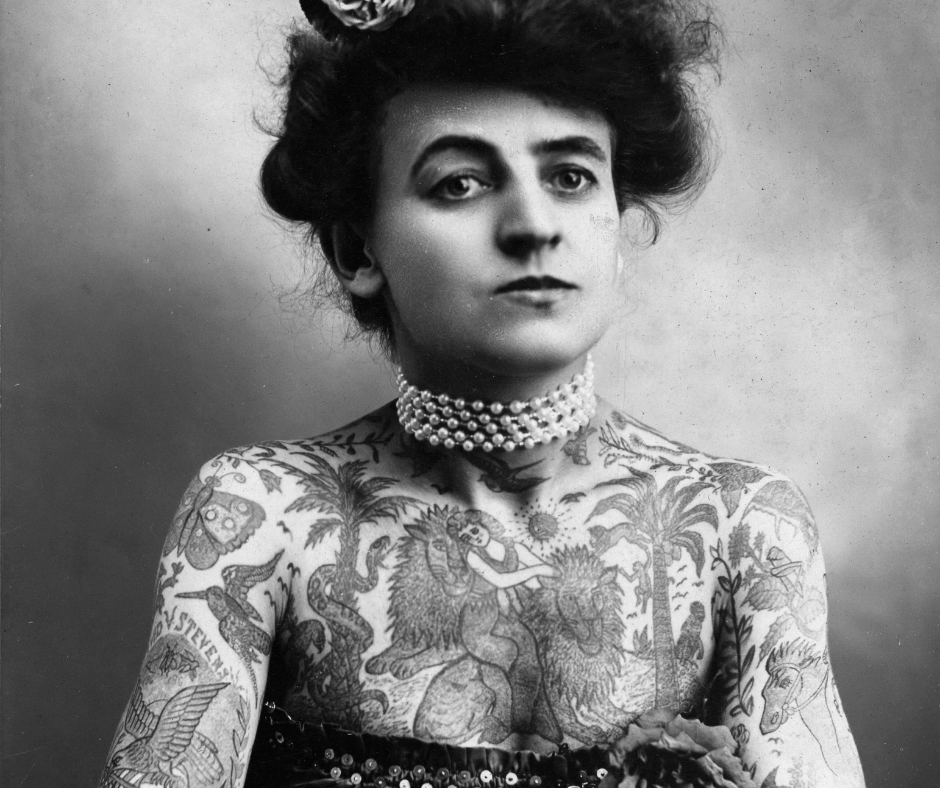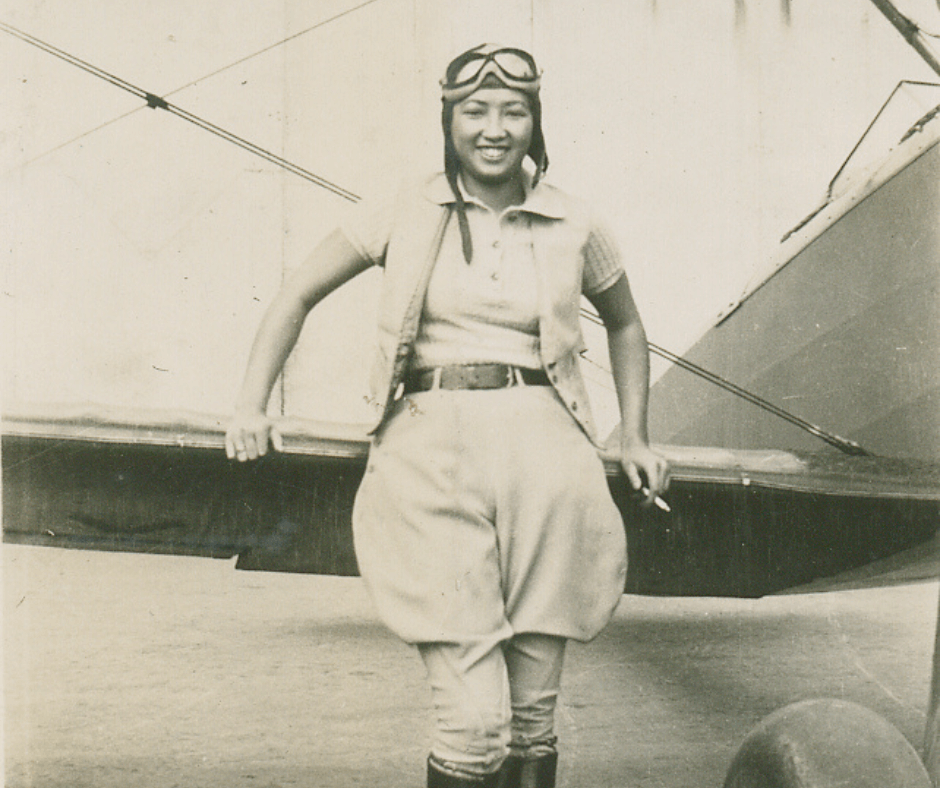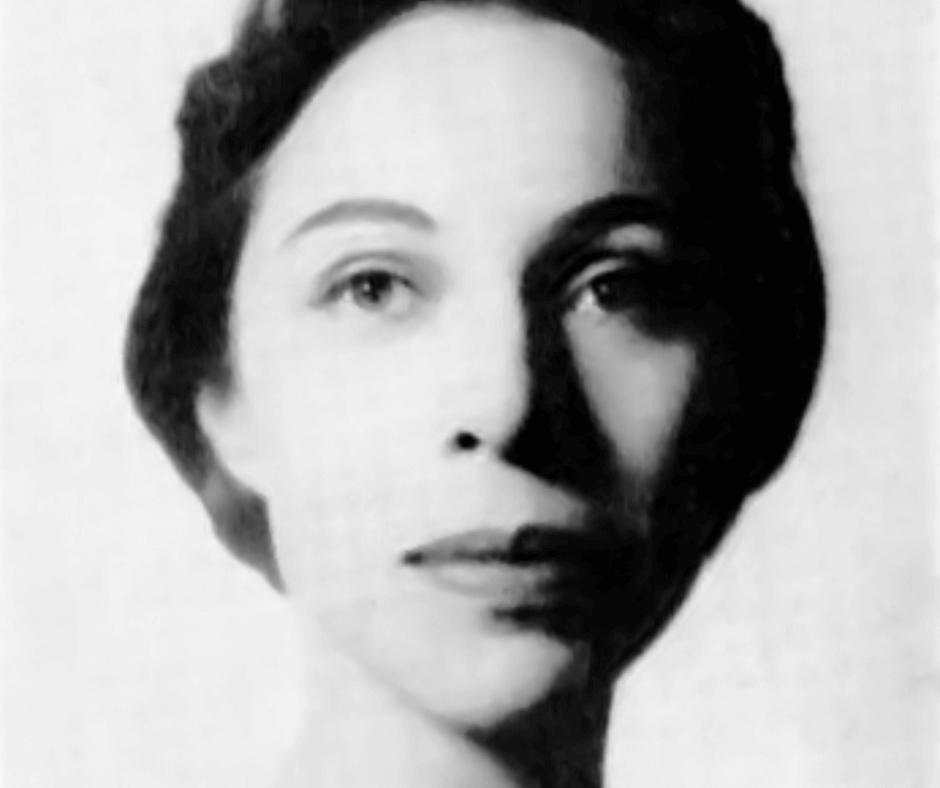This Women’s History Month, explore the inspiring stories and celebrate the legacy of pioneering women who defied norms and shaped progress for us all.
Since 1987, the United States government has officially designated March as Women’s History Month; a chance to learn about and recognise the invaluable contributions of American women to society. It’s a time to celebrate their achievements, resilience, and progress towards gender equality. By observing this month, we get a chance to reflect on the challenges women have overcome and the barriers they continue to break. Additionally, it’s an opportunity to amplify women’s voices, acknowledge their diverse experiences, and advocate for a more inclusive future.

Women’s History Month is crucial as it celebrates the countless contributions of women throughout history. It provides a platform to acknowledge their achievements, resilience, and the struggles they’ve overcome in various spheres of life. Recognising women’s accomplishments helps challenge gender stereotypes, promotes gender equality, and inspires future generations of women. It’s an opportunity to highlight the often overlooked roles women have played in shaping societies, cultures, science, politics, and every other aspect of human endeavor. By observing Women’s History Month, we honour the diversity of women’s experiences and reaffirm the importance of inclusivity and equality in our collective narrative.
6 Pioneering Women To Celebrate This Month
Throughout U.S. history, there have been many incredible women who challenged conventions and rebelled against expectations. Pushing the boundaries of what was considered possible for women, these six individuals forged a path so that others may follow. Progress cannot be made if a first step isn’t taken. Many of our rights and freedoms have come about because someone dared to be the first and push us forward.
Let’s celebrate some of them here …
Maud Stevens Wagner (1877 – 1961): Tattoo Artist

Born in Kansas, Maud Stevens Wagner was a circus aerialist who became the first female tattoo artist in the United States. It was during her time as a circus performer at the St. Louis World’s Fair in 1904 that Maud met a tattoo artist called Gus Wagner, who asked her out on a date—and whom she married a few months later. She agreed on the condition that he teach her this body modification artform, which he duly did. Honing her skills, Maud learned the stick-and-poke method and began creating her own styles and designs.
After gaining recognition for her intricate patterns and exceptional talent, she became a sought-after artist in her own right within a profession that was primarily male-dominated. With her fearless spirit and pioneering attitude, Maud challenged the conventions of her time, inspiring countless women to pursue careers in male-dominated fields within tattooing and beyond.
Bessie Smith (1894 – 1937): Blues Singer

Born in Tennessee and raised in poverty, Bessie Smith went from singing on street corners as a child for money after she and her six siblings were orphaned to becoming one of the most popular and influential blues singers of the 1920s and 1930s. Mentored by blues musician Ma Rainey; Bessie quickly rose to prominence with her raw, emotive vocal delivery and ability to convey the pain and struggles of African Americans during the Jim Crow era.
Signing to Columbia Records in 1923, Bessie, with her strong contralto voice, became a noticeable and well-liked talent that, despite facing discrimination and segregation, was able to tour extensively, performing in theatres and clubs across the United States. Earning the nickname “Empress of the Blues,” Bessie’s impact on American music cannot be overstated. She paved the way for future generations of blues and jazz singers, influencing artists like Billie Holiday and Janis Joplin. Tragically, her life was cut short in a car accident in 1937, but her legacy lives on through her timeless recordings like “Downhearted Blues” and “Empty Bed Blues”.
Amelia Earhart (1897 – Disappeared 1937): Aviator

Born in Kansas, Amelia Earhart was a trailblazing aviator who shattered gender barriers and inspired generations as the first female to fly solo across the Atlantic Ocean (in 1932). With courage and determination, fuelled by a fascination with planes and flying from early childhood; Amelia broke into the male-dominated field in 1921 after earning her pilot’s licence (at the time, only the 16th woman in the United States to do so). Her daring feats, numerous aviation records and adventurous spirit captured the world’s imagination, earning her widespread admiration and acclaim.
In addition to her groundbreaking achievements in aviation, Amelia was a vocal advocate for women’s rights and encouraged women to pursue careers in male-dominated fields. She served as an inspiration to countless individuals, proving that with perseverance, anything is possible.
Tragically, Amelia disappeared while attempting to circumnavigate the globe in 1937. This mysterious vanishing fueled speculation and intrigue for decades, adding to the enigma surrounding this pioneering aviator. Her disappearance has recently made headlines again after the possible discovery of the wreckage of her plane.
Hazel Ying Lee (1912 – 1944): Airforce Pilot

Born in Oregon, Hazel Ying Lee broke barriers by becoming the first Chinese American woman to fly for the United States military. Her love and aptitude for planes became official in 1932 when she earned her pilot’s licence—one of the first Chinese American women to do so—which was all the more remarkable during times of rampant anti-Chinese sentiment and unrelenting sexism. In 1943, alongside Maggie Gee, Hazel was accepted into the groundbreaking Women’s Airforce Service Pilots (WASP) program where she flew critical missions during World War II.
Despite facing prejudice and discrimination, Lee served with distinction, ferrying aircraft and towing targets for aerial gunnery practice. This courage and dedication paved the way for future generations of Asian American women, and women in general, in aviation. Tragically, her life was cut short in 1944 when her plane collided with another aircraft during a training mission; sadly making her the first Chinese American woman to die in service to her country.
Maria Tallchief (1925 – 2013): Prima Ballerina

Born in Oklahoma, Maria Tallchief soared to prominence as America’s first major prima ballerina (also the first Native American to hold this position—her father was from the Osage Nation, and her mother was Scots-Irish). Recognising her keen interest and talent for dancing from a very early age; her parents enrolled her in formal ballet lessons at the age of three on the Osage Indian Reservation. This training and her extraordinary aptitude for dance continued when the family moved to California when she was eight; and then on to New York City where she joined the Ballet Russe de Monte Carlo at the age of seventeen in 1942.
Maria’s impeccable technique and mesmerizingly energetic stage presence earned her rave reviews and well-deserved recognition, helping to revolutionise ballet. Her major breakthrough came when she joined the New York City Ballet in 1947 as a principal dancer, where she became synonymous with the works of choreographer George Balanchine. Her performances in iconic roles such as “The Firebird” and “Swan Lake” captivated audiences and critics alike, establishing Maria as one of the foremost ballerinas of her generation. Retiring in 1966, she left a legacy as an artist and cultural icon that has endured, forever shaping the landscape of American ballet and paving the way for diversity and excellence in the performing arts.
Sylvia Rivera (1951 – 2002): LGBTQ+ Activist

Born in New York City, Sylvia Rivera was a pioneering LGBTQ+ activist of Puerto Rican and Venezuelan descent whose tireless work transformed the landscape of queer rights in America. She identified most of her life as a drag queen and later as a transgender woman. Raised by her grandmother from the age of three after her father abandoned the family and her mother died by suicide, Sylvia began showing an interest in experimenting with clothing and make-up. After facing exclusion, discrimination, and physical violence at home and from others in her local community, Sylvia ran away when she was eleven, sadly experiencing sexual exploitation while trying to find safety. A year or so later, Sylvia met Marsha P. Johnson, an African American drag queen and LGBTQ+ activist who helped Sylvia become a fearless advocate for the marginalized and disenfranchised, especially transgender People of Colour.
In the late 1960s and early 1970s, Sylvia played a pivotal role in the Stonewall Riots alongside Marsha P. Johnson, a series of protests that catalyzed the modern LGBTQ+ rights movement. As a founding member of the Gay Liberation Front and the Gay Activists Alliance, she fought for the inclusion of transgender individuals in the broader LGBTQ+ rights movement, challenging discrimination and advocating for comprehensive social justice. Sylvia also co-founded the Street Transvestite Action Revolutionaries (STAR), providing shelter and support to homeless transgender youth.
In Summary
As March unfolds, it brings with it an opportunity to celebrate the immeasurable contributions, resilience and achievements of women throughout history. Women’s History Month serves not only as a commemoration of past struggles and triumphs but also as a call to action for continued progress towards gender equality and empowerment.
This month-long observance invites us to reflect on the remarkable individuals who have shattered barriers, defied stereotypes, and paved the way for generations to come. Like the groundbreaking activist, pioneering pilots, visionary dancer, sensational singer, and talented tattooist featured here; the tapestry of women’s history is rich with stories of courage, determination, and resilience.
Who are you celebrating this Women’s History Month? Which women throughout history inspire you?
Further Info:
Women’s History Month: How It Started, Why We Celebrate in March and More Questions Answered – People
11 Inspiring Female Podcasts for Women’s History Month – Women for Women International



wow! Love this! I had heard of many of these but the tattoo artist Maud Stevens for example was new to me what a wonderful post 🙂 Thanks for sharing!!
LikeLike
I am so glad you got to find out about Maud, such an incredible pioneer!
LikeLike
Thank you for the introduction to brave souls I’d never heard of…Maud Wagner, Hazel Lee and Sylvia Rivera. Fabulous post, Molly. Thank you. ❤️
LikeLike
I am so glad that you have found out about these incredible women here; wonderfully inspiring people!
LikeLiked by 1 person
🥰😎🥰
LikeLike
These are all inspirational pioneering women whose positive impact on the world is still felt today x
Lucy |
LikeLike
Very much so; their contributions are inspiring and important to this day!
LikeLike
oh wow!!! These are amazing women in history. Thank you for sharing about them. Good post.
LikeLike
So amazing; it was great to write a little bit about them this month!
LikeLike
Thank you for introducing us to these wonderful women. A woman who has always inspired me is Mother Teresa (now St. Teresa of Calcutta). I’m drawn to her because she found joy while serving the poorest in society.
LikeLike
I think the work to care for others is always inspiring, especially the often overlooked.
LikeLiked by 1 person
Those were some influential woman of American history. Thanks for sharing I learned something new today
LikeLike
They are all so incredible, and really made a difference for women and forged a path forward. Thanks for reading!
LikeLike
What a great article! This is the first time hearing about these amazing women especially Maud Stevens and should be celebrated every day.
LikeLike
They really should be celebrated more; each person mentioned hear made great contributions to the U.S. and wider world.
LikeLike
This was an interesting read, I’ve never heard of any of these people. Think I have a lot to learn as I’ve always been open to learning about history x
LikeLike
It’s always great to find out about people we had not heard of before; they are all incredible women!
LikeLike
I love this! Thanks for sharing!
LikeLike
Thank you for reading!
LikeLike
I never heard of Maud Stevens Wagner before. Her tattoos were amazing. I am interested in learning more about her.
LikeLike
She had a very interesting life and is well worth learning more about!
LikeLike
This is a fascinating read, with most of the women chosen unknown to me. As a father of a daughter, I’ll be sending the link on so my daughter gets some inspiration.
Thanks for sharing!
LikeLike
It’s great you’ve discovered these women and can share them with your daughter!
LikeLiked by 1 person
Thanks for sharing this post! I hadn’t heard of many of these amazing women and this was such an interesting read!
LikeLike
I am so glad to have introduced them to you here!
LikeLike
I’d heard of Amelia Earhart (and seen a graffiti mural dedicated to her on a beach in Devon) but not Hazel Ying Lee, so that was a really interesting discovery. Lovely post, Molly, some truly brilliant women to celebrate this month.
LikeLike
That sounds so cool that there’s a mural of Amelia Earhart there! I’m so glad I could introduce Hazel Ying Lee, she sounds absolutely incredible!
LikeLike
I love that you’re highlighting special women in history! I have known of several of them but not all.
LikeLike
It’s wonderful to be able to share these amazing women!
LikeLike
Thanks for sharing the stories of these wonderful women. Great to see you in the #WowOnWednesday link-up.
LikeLike
It was lovely to join; thank you!
LikeLike
I am only familiar with Amelia Earhart, so it was insightful learning about more women and their achievements. Also, Maud’s tattoos are nice, and she did have an interesting life!
LikeLike
I am so happy to hear you found some other incredible women to learn about. All so inspiring!
LikeLike
Thank you for sharing these inspirational women, we need to celebrate them more.
LikeLike
I agree, we need to make sure these women, and many like them, are celebrated for their contributions and extraordinary lives.
LikeLike
What an inspirational post! Thank you for highlighting these incredible women!
LikeLike
Thank you so much for reading!
LikeLike
This is very interesting. I was not familiar with these women, beside Amelia Earhart, so it was lovely to read about them. They are inspirational.
LikeLike
I am so glad that you got introduced to the women you had not heard of. All of them have very interesting lives to learn about. Thanks so much for reading!
LikeLike